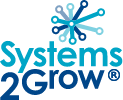September Newsletter
Human memory is fallible, and employees come and go.
So, as you know, I promote documenting your automated and people driven procedures where this will be helpful for your teams and help to take you out of the day-to-day micromanagement.
Before you can document your procedures though, you have to capture them.
What is Capturing Process?
It is the first step to find out which ones are important and then record them in video or through something like interview so you know what to document.
Capturing procedures goes beyond just writing down steps in a linear fashion. It’s about creating a blueprint that facilitates consistent execution, enables knowledge sharing, and safeguards against errors. As businesses expand, capturing procedures become essential to ensure that best practices are replicated, employees are trained efficiently, and productivity remains high.
So, you need to know how the processes fit into the organisation as a whole.
The articles I have found below have some really useful tips.

Refers to the process of capturing knowledge that has the potential for being stored in a knowledge repository.

Document capture technology is used to distill information from a paper or digital document and integrate it into a workflow. The idea is to simply capture the data to get where it needs to be to perform an operational task such as approval of invoices, sales orders or customer maintenance. In this blog we will go through the phases to achieve this.

How do you most effectively capture your organisation’s knowledge, experience and procedures into a process map? There are many approaches to process capture out there, but what works best and what will ensure that you capture the process correctly?

Click Capture Process to capture the actions of the process as you perform it and let Task Capture create the process diagram automatically. Then you can review and enhance the recorded documentation.


